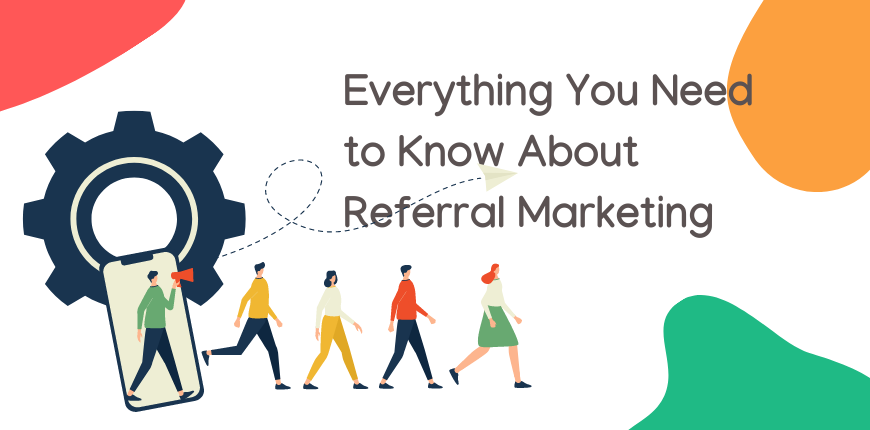Introduction
Table of Contents
Whether good or bad, word of mouth is a powerful and influential marketing initiative that can make or break any brand. For those keen on understanding this, the following piece will provide a detailed outlook and insight into referral marketing.
Businesses use it as a tool to attract new customers by relying on customers who are satisfied with a business’s service or product. Many consider it a lighter approach. A customer with a positive experience putting in a good word is less direct than sales messages and ads.
Referral marketing stretches beyond word of mouth promotion, which is known as direct referrals. It is more than a business owner chatting with a happy client and asking them to tell their friends and family. For example, implied referral programs include targeting your market through clients that are similar.
It is also a strategy that looks at ways to incentivize customers to refer their network to your business. This type is often referred to as tangible, while you can also have community programs, which partner with nonprofits.
Referral Marketing and Affiliate Marketing: What’s The Difference?
Referral marketing and affiliate marketing use the initiative of word-of-mouth to create awareness about a brand or cause. However, their approaches differ. Referrals, as the name suggests, come from people who have experienced the product and are making a recommendation.
Affiliate marketing is an approach businesses can use to attract new customers through various outlets, such as blogs. They find other brands or services to market or position their product and pay them to commission if it leads to a sale. For example, a blogger lists the top 15 products in a certain category, but they have not necessarily used them all.
An example of a SaaS affiliate is the all-in-one SEO platform SE Ranking affiliate program that covers keyword analysis, competitor research, website audit, backlink analysis, and other SEO processes. The company has a community of more than 4,000 affiliates who promote their SEO tools to their audience network. In return, the affiliates gain a 30% commission from each subscription sale that comes from their link, user cookies data for 120 days, and a lifetime earning opportunity.

Benefits of Referral Marketing
Some of the main benefits that businesses can expect as a result of using referral marketing include:
- Enhanced trust between customer and brand as the recommendation came from a personal source.
- It is ideal for those with an existing customer base, if each one tells a friend, the base grows and the reach is unlimited.
- It develops loyal customers, who are honest, tolerant, and will buy again.
- Costs are much lower than other marketing types that have to seek new audiences.
Drawbacks of Referral Marketing
Some of the drawbacks you might encounter using referral marketing include:
- The messages from referrers are not entirely within your control.
- Negative reviews and feedback have a significant impact, making caring for existing customers paramount.
- Building and nurturing customer relationships requires considerable time and effort to see results.
Implementing Referral Marketing
Before a business can begin any efforts to focus on referral marketing, the first step is to ensure that the business has a quality brand. That includes the product or service, customer support, payment processing, and delivery.
Ensure Product Quality
The four P’s of marketing help us understand all the crucial factors that go into the perfect marketing mix. There is the price, place, promotion, and lastly, the product quality, which is the most crucial in making any customer’s experience worthwhile and valuable.
Competition is stiff. To stand out from the crowd and ensure product quality (71% of buyers consider it the most valuable factor), you need to test your product and iron out any issues. Setting expectations is crucial too, do not promise something that your product cannot deliver. It is better to do two things well, rather than try to do seven things adequately.

Image source: PowerReviews
Provide Exceptional Customer Service
Having excellent support channels plays a significant influence in making customers feel valued. There are several channels that businesses can explore outside of the traditional phone or email routes. Companies can set up virtual platforms like a live chat feature on a website. The only thing that you need to consider is the type of channel to use according to the niche and the steps in the funnel. For example, consider providing customers with all needed information via an official website instead of contacting them directly as a cold contact.
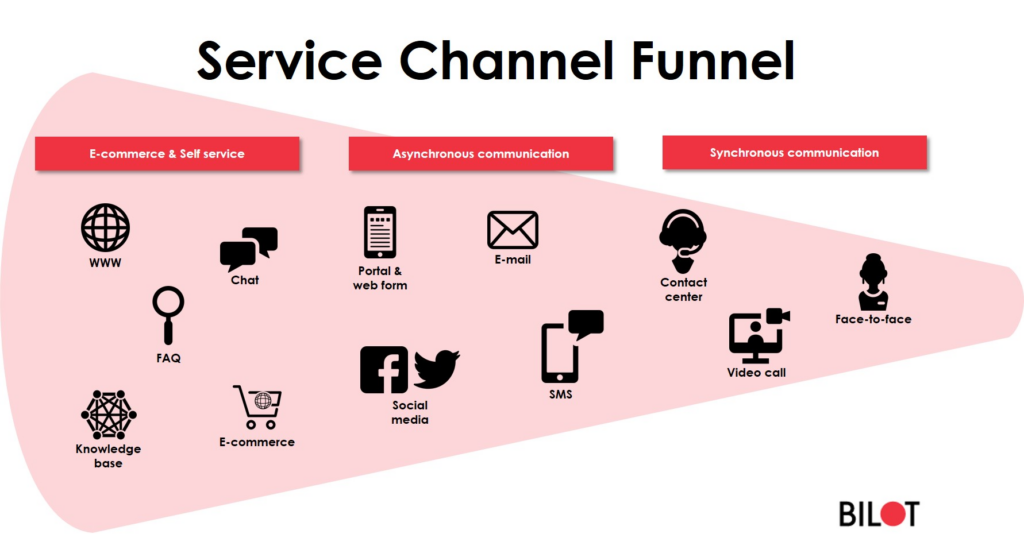
Image source: Bilot
They provide a way to answer queries, allowing consumers to make the most of the product. Time, attention, apologies, and solutions mean you can reassure existing customers and resolve issues in a positive manner. By tackling grievances professionally and sensitively, negative feedback won’t always mean a loss in customers and sales.
There are several aspects you can focus on to make a product worth talking about and create a shareable experience. An excellent example is customization. Ecommerce retailers adopt this feature since it grows conversions, time spent on the site, customer satisfaction, and additionally increases product offerings. Nowadays, it is easier to customize products online via SaaS solutions like Smart Customizer and Customily.
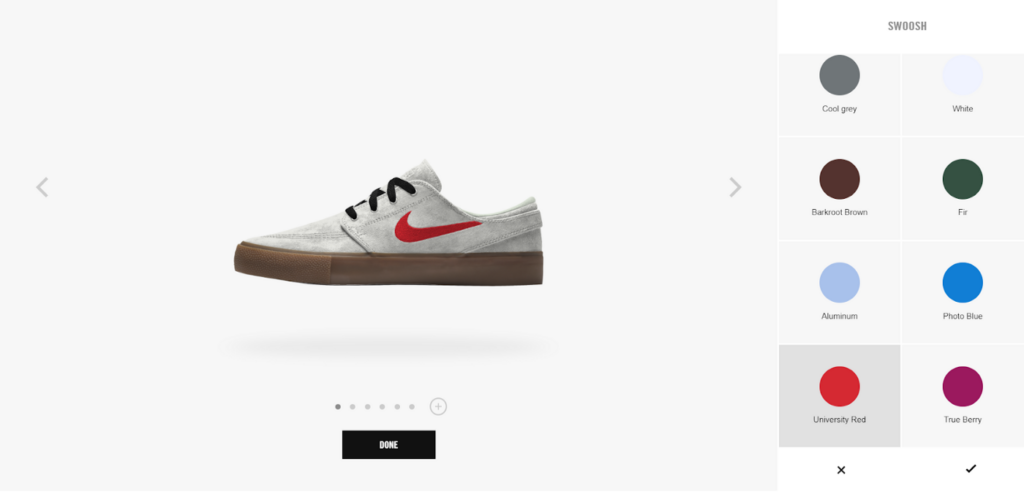
Image source: Medium
By investing in aesthetically pleasing product designs or campaigns that make the experience more personal, brands create a buzz about their product. Social media platforms, which often rely on visuals, are an excellent way for brands to be tagged and reach wider audiences since users are more likely to share their customized product via social media and refer a friend.
Types of Referral Programs
You can choose between the following types of programs depending on what suits your business.
Direct Programs: An Overview
Word of mouth initiatives are the most traditional of the referral program examples. Their strength lies in the fact that recommendations come from friends and family members. Research shows that 92% of consumers trust personal recommendations over other types of advertising.
Pros & Cons
Pros:
- Cost-effective
- Highly influential
- Limitless and anyone can do it
Cons:
- Limited control over what’s being said
Example
Coca-Cola is an excellent example of a direct referral program that’s been successful for many years. It’s a brand that invests itself in promoting multiculturalism and goodwill. In recent years, Coca-Cola has hosted several compelling ad campaigns such as Happiness Machines, Share a Coke, and referral codes encouraging its customers to enjoy their product together.
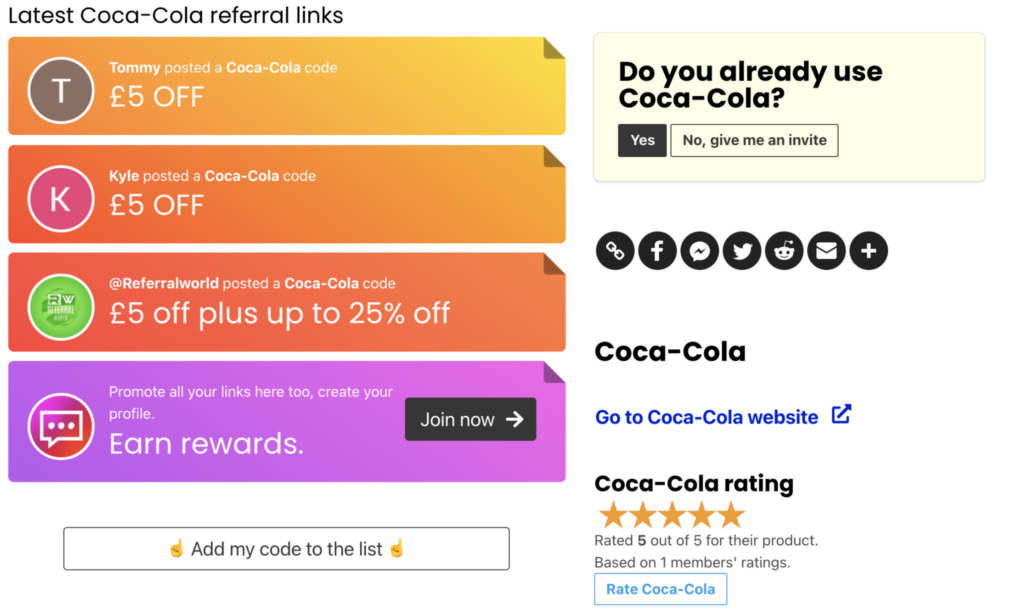
How to Get Started
Getting started is easy with direct referrals. Businesses can constantly remind their existing customers to spread the word both physically or through virtual means. A benefit of this approach is that it can be started for free with a simple recommendation from a friend or family member.
Online Reviews: An Overview
By offering a reviews section on a business website, satisfactory experiences and products can work favorably when potential customers are looking to see testimonials. It’s an even more valuable resource as potential customers are exposed to more than one referral based on a good experience.
Pros & Cons
Pros:
- Insight into different user experiences
- Hundreds of positive ratings mean more trust
- Accessible even if you do not have a website thanks to Yelp, Amazon, and Google
Cons:
- Negative reviews affect your reputation
- Negativity can be managed but requires input and tact
Example
American Express has done a good job using online communities to engage in online conversations with their customers. Being part of collective websites like Open Forum, has allowed American Express to build an insightful relationship with its fans.

Image source: media logic
How to Get Started
By having a website, big or small businesses can open a reviews section that allows customers to share their experiences with the company and what it offers. If this is not an option, creating a profile on a popular review site can also bring attention.
It’s a healthy practice to be honest and truthful in reviews. Answering negative ones allows the business to take control by publicly addressing the matter with the respective customer. Giving feedback publicly and mentioning a way forward shows potential customers that even in the event of an unfavorable experience, the brand will acknowledge this and take active steps to correct it.
Social media is a powerful platform that can work well to get a message across to larger audiences. By sharing active posts, it’s likely to reach an even greater audience outside of the immediate one.
Pros & Cons
Pros:
- Faster engagement, reach everyone in a person’s network in seconds
- Opportunities for others to share mean an even wider reach
Cons:
- Any negativity can get out of hand quickly
Example
Nike is a brand that’s grown at an even greater exponential rate because of its social portfolio. Nike has successfully established a massive customer service feed that’s increased its reputation via separate community groups according to interests such as Nike Run Club on Instagram with 5+ million subscribers and high engagement with every post.

How to Get Started
A good and cost-effective way would be to set up a brand profile or page on influential social media platforms like Twitter, Facebook, and Instagram. In this way, the brand can gradually gain followers through social interactions, which ultimately allows for recommendations and shares whenever the brand makes active posts.
Email: An Overview
Email marketing campaigns are another way that companies can approach referral marketing. It’s a smart way to capitalize on an existing contact list and platform to reach the masses and get the word out to the public through subscription and reward.
Pros & Cons
Pros:
- Affordable, especially with an existing contact list
- Fast and easy to monitor
Cons:
- Could be classified as spam
- Requires administration to develop and maintain
Example
ZooShoo is a great example of an online business that uses email marketing for its referral program. The company uses branded graphics in emails to clearly explain its incentive program.
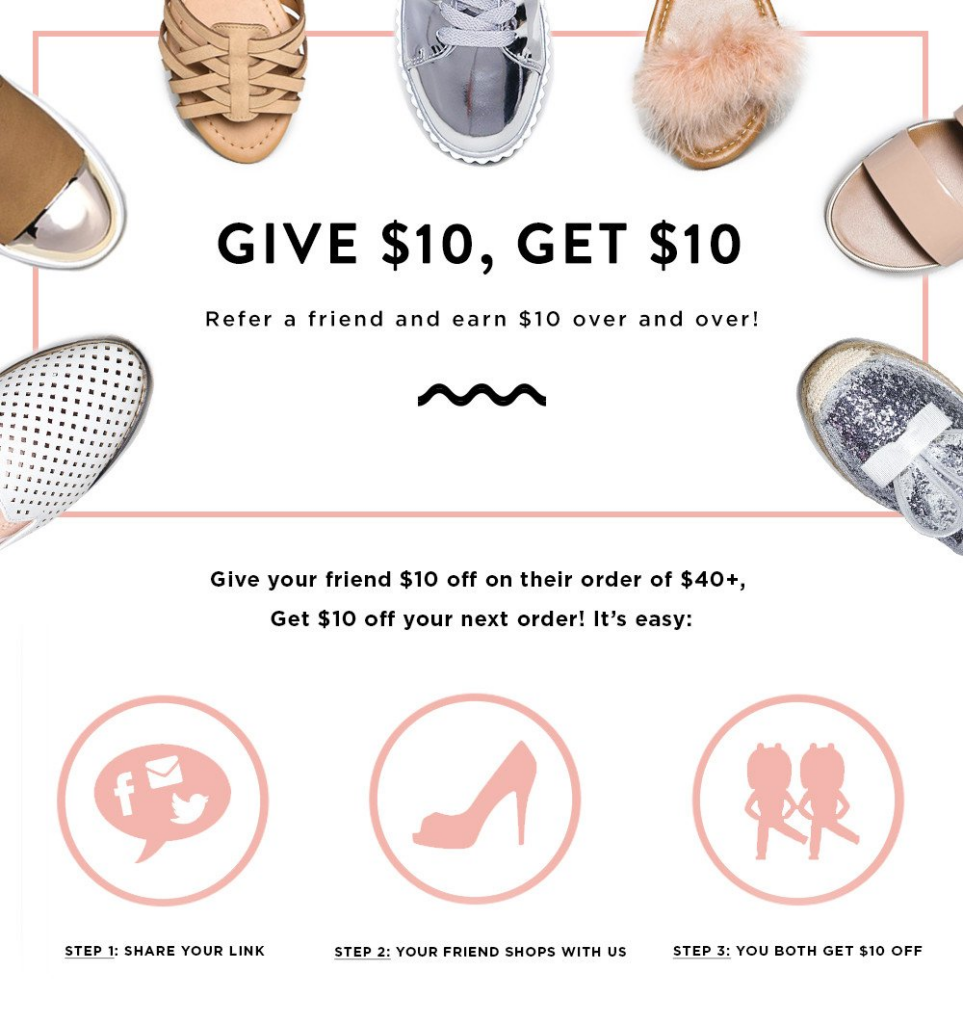
Image source: Campaign Monitor
How to Get Started
A business can begin by identifying the subscriber referral program that will work best for the company. Next, establish your list using a signup form or existing list, produce appealing materials, customize the message, and activate.
Key Features in Referral Programs
To have a successful referral program, some features need to be in place to ensure this.
Customer Profile
If a business intends to acknowledge customers who participate in referral marketing, it can use tools that allow each referral to be tracked and monitored. Invitebox and Mention Me are excellent examples of tools that can help businesses launch their referral marketing programs.
Incentives
While customers might want to shout about your product because they love it, it does not hurt to give them another reason to do so. Companies can opt to offer coupons, credit, money, gift cards, or even loyalty points to reward successful referrals. Software programs like Friendbuy are an excellent option to help facilitate these.
Reward Structure
Incentives are one thing, but having a structure in place can be a massive boost to increasing sales. Here, businesses will create a structure that places referrers in certain levels based on the number of referrals they have recruited, the higher the level the better the benefits.
Promotion
If your customers can benefit by spreading the word, they need to know about it. Many websites tend to have a specially dedicated page to promote the initiative. Mentioning it across other platforms, such as social media and on product inserts will keep your customers informed.
A/B Testing
Marketing approaches need to suit your company and audience. Trying different techniques and strategies helps you compare results and choose the best option. In this way, data can be collected, and businesses can have proven results that tell whether a campaign is working or not.
Using programs like Friendbuy, Mention Me, and Talkable, businesses can compare variables to determine which one works and which doesn’t.
Measure and Reporting
Each time a business chooses to implement a marketing model or strategy, it’s with the expectation of getting growth in ROI. With referral marketing, there are various ways to track and measure the metrics behind referral marketing to fully analyze the data.
Useful metrics include program cost, referral rate, participation rate, and churn. They inform your marketing budget, show you if customers stop doing business with you, and indicate your success in particular segments.
Fraud Prevention
Referral programs invite many opportunists. A good example is what some scammers do when they create various fake accounts to gain incentives or remuneration.
To prevent this, businesses can install software programs like Freindbuy that detect any fraudulent behavior.
Referral Marketing Takeaways
Referral marketing hosts many advantages and benefits, including developing trust and creating loyal customers. For businesses that have an existing customer base, it makes sense to use their positive experiences to increase sales.
It is a cost-effective tool that can be applied through email, social media, and word of mouth. Before you choose your program type, remember to strengthen your product and customer service, and aim for shareable experiences.
